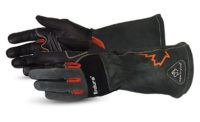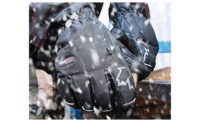Dear Subscriber,
Last week, we examined five hot topic issues in the EHS world. In this week's ISHN e-newsletter we round out the top ten issues heading into the new year.
Q 6. — WILL DEVELOPING NATIONS EVER GET SERIOUS ABOUT ENFORCING SAFETY LAWS?
Let’s pick on China. The "world’s factory floor." It’s estimated 110,000 to 140,000 Chinese workers died on the job in 2002. That’s as many as 380 deaths a day, compared to 16 in the U.S.
Chinese government officials are finally opening up and admitting they have a drastic safety problem on their hands. They're talking the talk: China recently enacted a law requiring high-hazard plants to obtain 3-year safe operating licenses. Companies must set up safety training classes, provide safety equipment, and have emergency plans. Any business without a license will be ordered to shut down.
Sounds good. But can the government walk the walk? But China, like the U.S., is a country of small enterprises. More than 120 million Chinese workers are employed in township and village enterprises, which average about 55 employees. How will Chinese safety inspectors ever reach these remote businesses? In the U.S., with our smaller economy and more organized regulators, we’ve tried to reach small businesses for decades and haven’t done a good job.
Plus, developing countries like China are heavily dependent on foreign investment to pay off debts, and there is real incentive not to turn away foreign investors by strongly enforcing safety penalties.
What do do: When we survey our readers, probably 80-90 percent profess little or no interest in international EHS issues. They’re just too busy to care. But conditions in many countries are atrocious, and there’s a real need for assistance from experts like you. And today there are more opportunities than ever to lend a hand. ASSE and AIHA and the National Safety Council all have expanding international divisions. Check out their projects, and how you might help.
Q. 7 — CAN EHS PLAY A ROLE IN CUTTING HEALTH CARE COSTS?
Many ISHN readers believe so. When we surveyed readers and asked what their top priorities for 2004 would be, the most common response was: work to lower health care costs.
And with good reason. Health care costs increased 11 percent for businesses this year, after increasing 14 percent last year.
But again, EHS pros face hurdles trying to make a difference:
What to do: Selling health and wellness is similar to selling safety programs to management. You need to change programs from being passive and reactive to proactive and fun to participate in. Do more than tack up posters, send out newsletters, lecture in classrooms, and make employees feel guilty about their behaviors.
Here’s one idea: Subscribe to a Google daily news alert using keywords "employee health and wellness." You’ll come across many companies with resourceful, creative health promotion programs. And they are producing results.
Also, check out . The Wellness Councils of America. Their web site and e-alerts offer the latest findings on the bottom line benefits of health promotion.
Q. 8 — WILL EMPLOYERS ACCEPT JOB STRESS AS A SERIOUS HEALTH ISSUE?
We all know it is, right? For example, in your workplace would you be able to say 85 percent of your employees are stress-free? Yes, 85 percent!
That’s the goal in the United Kingdom. Businesses in the U.K. will be in compliance with new workplace stress guidelines if at least 85 percent of employees say they can cope with job demands and are not excessively stressed-out.
In New Zealand, employers are now liable up to $500,000 for employee stress-related problems made worse by job demands.
Of course the odds of these kinds of laws coming home to roost in the U.S. are slim and none. After all, a review of OSHA’s A to Z subject index on its web site finds more than 350 topics, but nothing on stress.
What to do: What can EHS pros do about our John Wayne mindset regarding job stress? We sweep stress under the office carpet for two reasons: The macho idea that you don’t go public with complaints about being stressed-out. And the fear employers have over being liable for stress and paying out comp claims.
You can use the emotional intelligence that most EHS pros have in ample supply. Keep your antennae up for signs of stress among workers. Use your trust and credibility with employees to have conversations if you think you’ve spotted problems. Most of all listen. Then point people in directions for help if it's needed. Don’t play doctor and over-diagnose. But use your empathy.
Q. 9 — AFTER BEHAVIOR-BASED SAFETY, WHAT’S THE NEXT NEW THING?
The fathers of behavior-based safety are talking a new game. At the National Safety Congress in September, before it was shuttered by Hurricane Ivan, Tom Krause of BST was talking about cognitive biases and the root causes of cultural failures. BST’s Jim Spigener talked about the importance of personalities. Scott Geller talked about states of mind — do you seek success in safety or try to avoid failure?
What to do: What they are saying is that it’s time to study the whole person, not just their behaviors. Trying to get employees involved in safety? Trying to break the chain of accident repeaters? Raise awareness about the influence of self-talk, of personal beliefs, of positive and negative outlooks, of personality traits and states of mind.
Scott Geller calls this People-Based Safety.
The same holistic approach is happening with safety programs. VPP companies, companies with safety and health management systems, are studying the whole program and how the pieces fit together — or how they don’t connect. It’s not hazcom one month and confined space the next. It’s using a scorecard to grade all the elements that make up a program – from management leadership to emergency preparedness. This is what the ANSI Z10 standard allows you to do.
Q. 10 — HOW MANY HATS CAN AN EHS PRO WEAR AT THE SAME TIME?
There’s environment, security, safety, workers’ comp, health, industrial hygiene, who knows, maybe quality, product stewardship, and more. Pros in progressive programs are moving on to roles as culture change agents, mentors, coaches, and executive advisors.
In this economy, you’re probably better off wearing too many hats than too few. Baby, it’s cold outside, as EHS recruiters will tell you.
What to do: Stay warm. Try another hat on for size.
Dave Johnson is the ISHN E-News editor. He can be reached at djsafe@bellatlantic.net, (610) 666-0261; fax (610) 666-1906.
3E Company - Alleviating the Pain of HazMat Information & Compliance Management
Visit us at www.3ecompany.comThe "How To" Manage Hazardous Waste
Join 3E Company and guest speakers, Terry Goltz Greenberg, practicing Occupational Safety & Health Attorney with Singer & Greenberg, and Michael Beckel, Hazardous Materials Technical Specialist, 3E Company, for an educational, complimentary Web Seminar - "The 'How To' Manage Hazardous Waste".
This Web Seminar will focus on the Hazardous Waste Standard and what companies need to think about from a practical and legal perspective to comply with the worker protection standards of the Occupational Safety and Health Act when disposing of, tracking and cleaning up waste. Topics include:
- Hazardous Waste Standard (HAZWOPER)
- What defines Hazardous Waste
- What agencies have applicable/overlapping regulations
- Requirements of Hazardous Waste clean up - planned activity
- Requirements for Emergency Response operations and plans - unplanned clean up
When: Thursday, November 18, 2004
Time: 9:00 - 11:00 a.m. PST
Cost: Complimentary
Where: Anywhere your computer resides
How: Web browser (Both audio & visual)
Click here https://compx17.eventcenterlive.com/cfmx/ec/register/reg.cfm?BID=1&RegID=28ABC806 to sign up for "The 'How To' Manage Hazardous Waste" session of the 3E HazMat Management Web Seminar series.
If you have any questions or have problems registering, please call 800.346.6737 or email info@3ecompany.com
Protective shades a stylish outdoor solution
GlareX polarized eyewear from AOSafety provides impact protection and blocks reflective glare for outdoor workers. Laborers working in the sun have long fought solar reflections, glare and simple eye fatigue, the problems often exacerbated by use of indoor safety eyewear. The GlareX glasses block off-axis reflective light from all surfaces using invisible, vertically oriented polarizers in the lens. Featuring an ergonomic and stylish frame, wrap-around styling for excellent coverage, lightweight design for added comfort and low-pressure Spatula temples, outdoor workers should have no problem leaving their shades on all day. Meeting ANSI Z87.1-2003 high impact standards and featuring scratch-resistant coating on dual polycarbonate lenses, the glasses reduce up to 99.9 percent of UV rays.
CLICK HERE http://209.200.67.149/aosafety.com/industrial/default2.cfm for product details.
Special Opsâ„¢ Series respirators
The Special Ops™ Series respirators from Moldex were designed to meet the toughest working conditions on the planet. The solid black color stays cleaner looking longer preventing pre-mature disposal of the masks before the filters are used up. And our Dura-Mesh® shell resists collapsing in heat and humidity. The HandyStrap® allows the mask to hang around the neck when not in use so it’s always ready when you are.For added comfort the respirators include a soft foam nose flange, contoured nose bridge, Ventex® valve and Softspun® lining. NIOSH certified to have a filter efficiency of 95% or greater against particulates free of oil. Available without valve (M2600N95), with valve (M2700N95) and with added carbon layer for nuisance levels of organic vapor odors (M2800N95).
For samples of our Special Ops Series or for more information on our entire line of respiratory protection, phone: 800-421-0668, Email: sales@moldex.com Web site: www.moldex.com.
Books from ASSE
You can order these titles and more from the American Society of Safety Engineers Bookstore on ISHN's Web site. Visit — http://www.ishn.com/FILES/HTML/ISHN_ASSE_index/Among the books you'll find:
- "Refresher Guide for the Safety Fundamentals Exam"
- "The Participation Factor," by Dr. E. Scott Geller
- "Safety Training That Delivers"
- "Building a Better Safety and Health Committee"
- "Safety Management - A Human Approach," and "Techniques of Safety Management - A Systems Approach," both by Dan Petersen.
MARKET RESEARCH
ISHN offers exclusive market research survey reports including White Papers, Online Training Editorial Study, Web-based Training Study, Salary Study, Hygiene Instrument Study, PPE Study, and more... CLICK HERE http://www.ishn.com/FILES/HTML/ISHN_market_research_index/0,5680,,00.html to learn more about these studies.DIRECT MAIL
Look to ISHN's 73,000+ subscribers for your next direct mail campaign. For customized lists, call toll free: 1-800 323-4958; Fax: 1-630-288-8390; E-Mail: directmarketing@dm2lists.com; Web: www.dm2lists.comWE NEED YOU!
Are you a safety and health pro or a manufacturer or provider of occupational safety and health products or services who enjoys writing?Shakespeare need not apply, but ISHN is looking for authors to publish short articles (1,000 words) in our monthly issues.
Topics include: safety success stories, close calls and personal experiences, training tips, use of software, engineering controls (machine guards, lockout-tagout), gas detection and air monitoring, confined space safety, personal protective equipment, and OSHA compliance issues.
If any of these topics interest you — or if you have other ideas — e-mail editor Dave Johnson at djsafe@bellatlantic.net
We will also consider articles you’ve already written but not submitted to any safety magazine.
Thanks.

